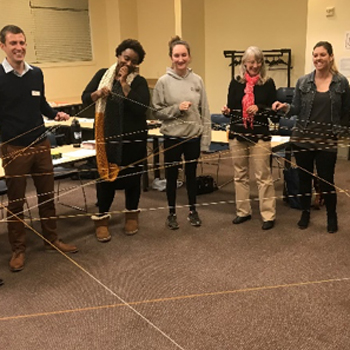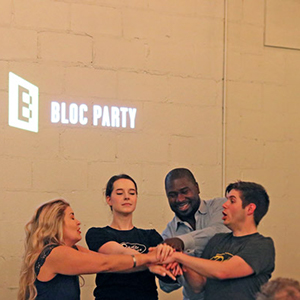 (Photo by iStock/invincible_bulldog)
(Photo by iStock/invincible_bulldog)
As Americans contend with the 59th presidential election in a time of extreme polarization, political leaders are offering divergent takes on today’s most challenging problems: climate change, economic inequality, health care, immigration, education, gun violence, the opioid crisis, racial inequality, stagnating wages, student debt, and other issues of critical import to civil society. Beyond increasing voter registration, what role can nonprofits, advocates, philanthropists, foundations and others play amid the political process to advance their missions? Here are 13 SSIR articles to help your organization speak out during the election cycle and encourage others to join your cause.
1. This Is What Democracy Looks Like
 Ventures, a nonprofit in Seattle, shares insight into designing sustainable, effective, and community-driven advocacy programs.
Ventures, a nonprofit in Seattle, shares insight into designing sustainable, effective, and community-driven advocacy programs.
2. Getting Political Is Good for Everyone
 Nonprofits that engage in political activity benefit themselves, those they serve, and the political system as a whole, writes Bill Shore, founder of Share Our Strength.
Nonprofits that engage in political activity benefit themselves, those they serve, and the political system as a whole, writes Bill Shore, founder of Share Our Strength.
Are you enjoying this article? Read more like this, plus SSIR's full archive of content, when you subscribe.
3. When Philanthropy Meets Advocacy
 Increasing numbers of Americans want charitable organizations to step into the public policy arena and lead the causes they care about.
Increasing numbers of Americans want charitable organizations to step into the public policy arena and lead the causes they care about.
4. Making Local Advocacy Stronger by Connecting It to the Bigger Story
 Activists can be more successful at solving problems in their communities by using three simple strategies to connect local, national, and global narratives.
Activists can be more successful at solving problems in their communities by using three simple strategies to connect local, national, and global narratives.
5. Keeping People Engaged in Your Cause With Help From Behavioral Science
 Nonprofits struggling to keep supporters excited about their causes should follow these five recommendations to make the most of Stanford behavioral scientist B.J. Fogg's model for getting people to act.
Nonprofits struggling to keep supporters excited about their causes should follow these five recommendations to make the most of Stanford behavioral scientist B.J. Fogg's model for getting people to act.
6. Podcast: Storytelling and Social Change
 How do stories work to expand and accelerate impact? A roundtable discussion between four storytellers and leaders of change on narrative's power to reach and inspire new audiences.
How do stories work to expand and accelerate impact? A roundtable discussion between four storytellers and leaders of change on narrative's power to reach and inspire new audiences.
7. The Science of What Makes People Care
 Five principles based in social science that will help organizations connect their work to what people care most about.
Five principles based in social science that will help organizations connect their work to what people care most about.
8. How to Use Stories That Bring ‘Us’ and ‘Them’ Together
 To build more inclusive movements, social advocacy organizations and activists need to create stories that can engage both familiar and new communities.
To build more inclusive movements, social advocacy organizations and activists need to create stories that can engage both familiar and new communities.
9. How to Build Better Calls to Action
 A well-told story can inspire people to engage with social and environmental issues, but how do nonprofits channel that energy into behaviors that make a difference? Behavioral science can help point the way.
A well-told story can inspire people to engage with social and environmental issues, but how do nonprofits channel that energy into behaviors that make a difference? Behavioral science can help point the way.
10. Eight Tips for Communicating Ideas to Busy Policymakers
 How foundations, nonprofits, and others can effectively convey—and convince policymakers to support—their programs and proposals for social change.
How foundations, nonprofits, and others can effectively convey—and convince policymakers to support—their programs and proposals for social change.
11. Stop Raising Awareness Already
 It’s time for activists and organizations to adopt a more strategic approach to public interest communications.
It’s time for activists and organizations to adopt a more strategic approach to public interest communications.
12. Aspirational Communication
 Organizations must connect their causes to the personal aspirations of their audiences to transform public attitudes. Open for subscribers only. Visit our subscriptions page to support SSIR's mission to inform and inspire leaders of social change.
Organizations must connect their causes to the personal aspirations of their audiences to transform public attitudes. Open for subscribers only. Visit our subscriptions page to support SSIR's mission to inform and inspire leaders of social change.
13. The Back of the Envelope Guide to Communications Strategy
 Communications strategy should be flexible, scrappy, and accessible to everyone on your team. This four-question framework, rooted in social science, can help organizations craft an effective strategy that drives real social change.
Communications strategy should be flexible, scrappy, and accessible to everyone on your team. This four-question framework, rooted in social science, can help organizations craft an effective strategy that drives real social change.
Support SSIR’s coverage of cross-sector solutions to global challenges.
Help us further the reach of innovative ideas. Donate today.
Read more stories by SSIR Editors.

